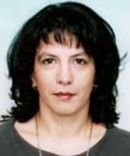|
Plenary
Lecture
Performance Analysis of SSC/SC Combiner at Two Time
Instants in The Presence of Fading
|
 |
Dr Dragana Krstic
Department of Telecommunications
Faculty of Electronic Engineering
University of Nis
SERBIA
E-mail: dragana.krstic@elfak.ni.ac.rs
|
Abstract: The performance analysis of diversity
schemes in wireless communications typically involves
the assumption of a variation of an instantaneous value
of the received signal, i.e. fading of signal envelope,
due to the multipath propagation. Fading is one of the
main causes of the receiver performance degradation.
Diversity combining technique which consists of
receiving redundantly the same information-bearing
signal over two or more fading channels, then combining
these multiple replicas at the receiver in order to
increase the overall received signal-to-noise ratio (SNR)
is commonly used. Diversity technique is certainly one
of the most frequently used methods for combating the
deleterious effect of channel fading.
Since the selection combining (SC) and switch and stay
combining (SSC) do not require signal cophasing and
fading envelope estimation, they are very often
implemented in practice. The SC is combining technique
where the strongest signal is chosen among L branches of
diversity system. In the case of dual branch SSC, the
first branch stay selected as long as its instantaneous
signal-to-noise ratio (SNR) is greater than
predetermined switching threshold, even if the
instantaneous SNR in the second branch maybe has a
larger value at that time. The consideration of SSC
systems in the literature has been restricted to
low-complexity mobile units where the number of
diversity antennas is typically limited to two.
The Rayleigh fading is a simple channel model frequently
used to model multipath fading with no direct
line-of-sight (LOS) path exists between the transmitter
and receiver antennas. It also applies to the
propagation of reflected and refracted paths through the
troposphere and ionosphere and to ship-to-ship radio
links.
Considering Nakagami-m distribution multipath scattering
with relatively large delay-time spreads, with different
clusters of reflected waves are described. In that way
good fits to collected data in indoor and outdoor
mobile-radio environments are provided.
Slow fading can be caused by events such as shadowing,
where a large obstruction such as a hill or large
building obscures the main signal path between the
transmitter and the receiver. The amplitude change
caused by shadowing is often modeled using a log-normal
distribution with a standard deviation according to the
log-distance path loss model.
The probability density functions of the SSC/SC combiner
output signal at two time instants in the presence of
Rayleigh, Nakagami-m and log-normal fading are
determined in closed form. The probability density
function of the SSC/SC combiner output signal at two
time instants is important when the decision is based on
multiple samples. The outage probability is numerically
calculated using PDF. The graphically shown results
emphasize better performances of the SSC/SC combiner
apropos classical SSC and SC combiners at one time
instant.
Brief Biography of the Speaker:
Dragana S. Krstic
was born in Pirot, Serbia. She received the BSc, MSc and
PhD degrees in electrical engineering from Faculty of
Electronic Engineering, Department of
Telecommunications, University of Nis, Serbia, in 1990,
1998 and 2006, respectively. Her field of interest
includes telecommunications theory, optical
communication systems, wireless communication systems,
satellite communication systems etc. She works at the
Faculty of Electronic Engineering in Nis since 1990. She
participated in more Projects which are supported by
Serbian Ministry of Science. She has written or
co-authored about 140 papers, published to
International/National Conferences and Journals. She has
also reviewed more articles in IEEE Transactions on
Communications; IEEE Communications Letters; ETRI
journal; C&EE Journal; Electronics and Electrical
Engineering (Elektronika ir Elektrotechnika) and other
journals. She is the reviewer of the papers for many
conferences and the member of technical program
committees and international scientific committees of
several scientific conferences.
|
